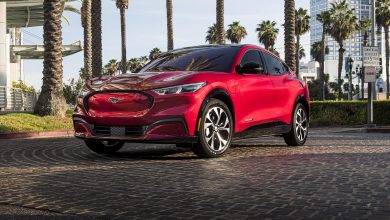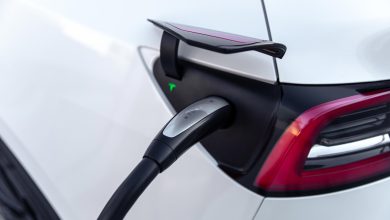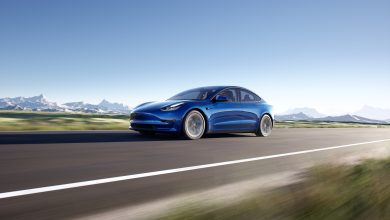Study Shows Autonomous Vehicles Can Alleviate Traffic At Intersections
EV NewsSome researchers think autonomous driving vehicles are climate disasters

No one likes to get stuck in traffic. Incidences of gridlocks are usually worse at intersections. Interestingly, transportation engineers at North Carolina State University recently revealed that adding a fourth “white light” to traffic signs will equip Autonomous Vehicles (AV) with the ability to control traffic flow as well as guide human drivers on who to follow.
In the current traffic sign setup, green means ‘go’ while yellow and red means ‘slow down’ and ‘stop’ respectively. Using computational simulations, the researchers were able to predict ways autonomous driving vehicles can significantly enhance travel time around intersections and lower fuel consumption.
The team at North Carolina State started the “white phase” traffic intersection concept back in 2020. However, the original concept focused on the use of a centralized computing approach.
In this case, the computer operating the traffic light is solely responsible for collecting data from the oncoming AVs, carrying out the required calculations, and directing the AVs on how to proceed through the intersection. Apparently, that was too much work for one computer.
How the fourth traffic light will work
The researchers named this new concept the ‘white phase intersection’. The idea will rely on the use of AV’s computing power to predict and navigate the traffic flow at intersections. Under the white phase concept, AVs within a particular area like a traffic signal or an intersection will communicate wirelessly among themselves.
“This concept we are proposing for traffic intersections, which we call a ‘white phase’ taps into the computing power of AVs themselves,” said Ali Hajibabaie, the corresponding author of the paper and an associate professor of civil, construction and environmental engineering at North Carolina State University.
At the same time, the AVs will communicate with the central computer controlling the traffic signal. The central computer will collect and analyze the collected data and when ample AVs approach an intersection, the White Light on the signal will be activated.
So, once the White Light is turned on, it will help to tell human drivers that there are many AVs at the intersection coordinating their movements to ensure optimum and efficient traffic flow. The researchers claim this will be important information for non-autonomous vehicles with human drivers.
According to the researchers, when the White Light is turned on, human drivers will simply have to follow the vehicle in front of them to get the best traffic flow. If the vehicle in front of you moves you move and if it stops, you stop. Ultimately, this will save fuel and time.
Once the number of vehicles is predominantly non-AVs, the traffic light will revert to the conventional green-yellow-red pattern.
“Granting some of the traffic flow control to the AVs is a relatively new idea known as the mobile control paradigm,” said Prof. Hajibabaie. “To be clear, the color of the ‘White Light’ doesn’t matter. What matters is the presence of a signal that is clearly identifiable by drivers.”
The presence of AVs will significantly boost traffic at intersections
The researchers tested the efficacy of the white phase using specially designed miniature traffic simulators. The complex computational model simulators are designed to mimic real-world traffic, up to the behavior of individual vehicles.
With the help of these simulators, the researchers compared traffic behaviors at intersections in the presence and absence of the white phase. They also checked how the number of AVs available at the intersection affects the efficacy of the system.
Although the researchers found that AVs could be useful in improving the flow of traffic, the white phase concept will only become useful when there are more AVs at the intersection. According to the research findings, if there are 10 to 30% of AVs at the intersection, only a small improvement in traffic flow will be recorded.
“Even if only 10% of the vehicles at a white phase intersection are autonomous, you still see fewer delays,” said Hajbabaie. “For example, when 10% of vehicles are autonomous, you see delays reduced by 3%. When 30% of vehicles are autonomous, delays are reduced by 10.7%.”
However, as the number of AVs grows, the benefit of the white phase will also multiply. The concept of the White Phase is still in its infancy and may take years before AVs can adopt the distributional computational approach for traffic. Also, it will take more time for the government to adopt the inclusion of white lights in traffic signals.
Considering that many automakers are still trying to figure out autonomous driving with some automakers scaling back on their initial enthusiasm, it may take a long while for this idea to become practicable. Nevertheless, the researchers believe there are opportunities where the practicability and benefits of the system can be tested.
“For example, ports see high volumes of commercial vehicle traffic, for which traffic flow is particularly important,” Hajbabaie said. “Commercial vehicles seem to have higher rates of autonomous vehicle adoption, so there could be an opportunity to implement a pilot project in that setting that could benefit port traffic and commercial transportation.”
Some researchers think autonomous driving vehicles are climate disasters
While the team at North Carolina State University is looking for ways to exploit autonomous driving for good, another team of researchers at the Massachusetts Institute of Technology believes self-driving cars will be a climate disaster.
In a recent study, MIT researchers measured the energy consumed by the powerful onboard computers that function as the brains of AVs. They discovered that widespread adoption of AVs will lead to the generation of additional 0.14 gigatons of greenhouse gas emissions annually.
According to the researchers, even if the AVs are electric, they will still increase global warming through the need for more electricity to charge the batteries as well as the energy required during the manufacturing process.
They argued that energy companies may resort to coal to meet up with the energy demand which will be counterproductive to what EVs were designed to accomplish. However, instead of suggesting the phasing out of AVs, the authors are of the opinion that automakers should build AV computers that are less power thirsty.
“This has the potential of becoming an enormous problem,” said Soumya Sudhakar, a coauthor of the study. “But if we get ahead of it, we could design more efficient autonomous vehicles that have a smaller carbon footprint from the start.”




